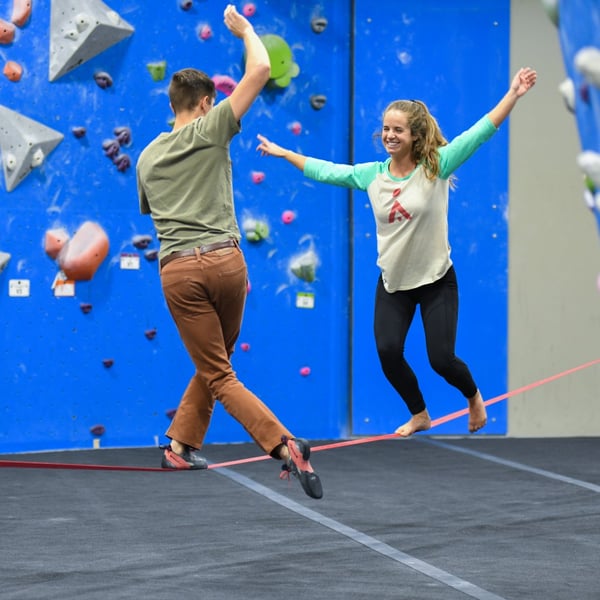The key to a good life is to have balance and what better way to test your skills than walking along a suspended length of flat webbing tensioned between two anchors, also known as slacklining? If you’ve never heard of slacklining or would just like a few extra tips, we’re here to help!
What is the Point of Slacklining?
Slacklining is beneficial for climbing because it helps with focus and stabilization muscles of the hips, knees and ankles. Not to mention, it’s also fun!
What's the trick to slacklining?
Whether it’s your hundredth or your first time on the line, the goal is to build up stabilization muscles in your legs, as well as confidence! Here are a few tips to get you started with slacklining:
- Start slow. You’ll want to start at the end of the slackline, close to the anchor (usually a tree or something else sturdy) and begin simply trying to stand on one leg. From here, you can use the anchor to catch yourself as you fall. As you feel more comfortable doing this, try turning away from the anchor and taking a couple steps at a time. If you fall, don’t worry, just hop back on and try again!
- Grab a friend. If you have a friend close by, you can use them as a support buddy while you take more steps on the line. Hold their hand and have them walk next to you as you continue taking steps on the slackline. This is a great way to help feel more comfortable and stabilized. Plus, if you fall, they will catch you!

- Set your gaze. When starting out, resist the urge to look down at your feet. Instead look straight ahead at a focal point, whether it’s the anchor or simply ten feet in front of you. This allows you to feel the slackline with your feet.
- Posture. The key to a good life is to have balance, and to have balance means you need to have good posture. On the slackline, you’ll want to have your shoulder up and out, your hands to the side, your head in line with your feet, and your knees slightly bent.
- Your feet. When it comes to foot position on the line, it’s slacker’s preference. One quick thing to note: it’s beneficial to have your big toe and heels aligned parallel to the line. Also, if you’re wondering about wearing shoes or no shoes, it doesn’t matter. Some people may find that it’s easier without shoes because they can feel the line better.
Find a Movement Gym near you.
